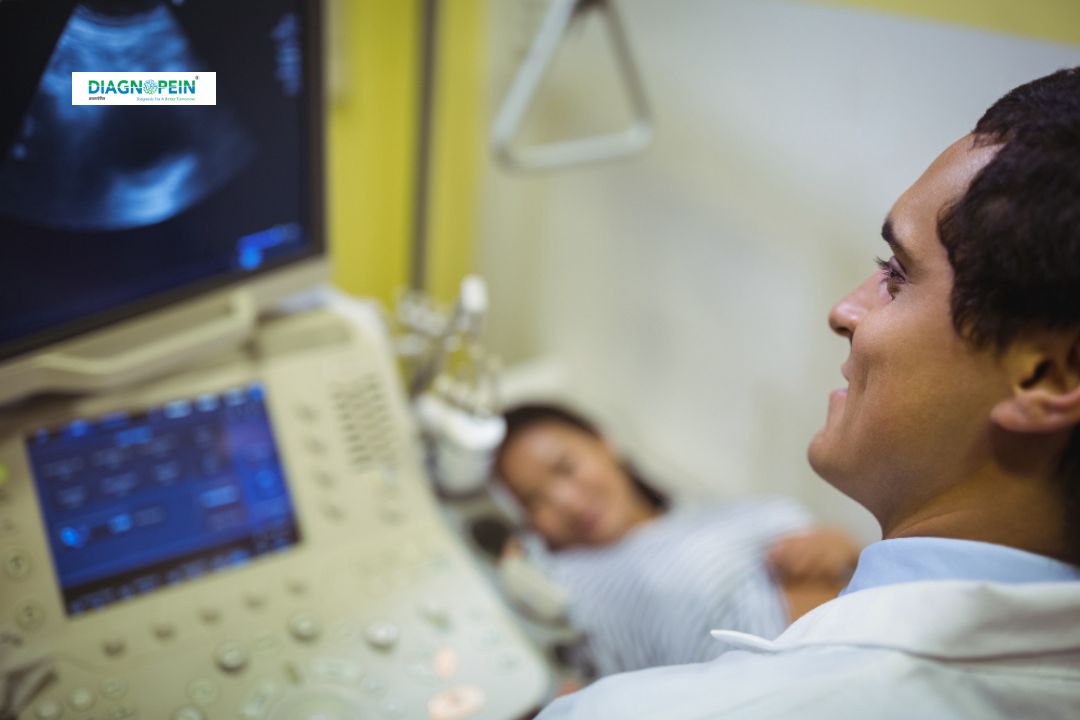Why Choose USG Orbit?
Performing a USG Orbit test offers a detailed evaluation of the orbital region, helping identify hidden problems in both soft tissues and deep ocular structures. Compared to CT or MRI scans, USG Orbit is safe, cost-effective, and radiation-free. Its ability to assess the posterior chamber of the eye makes it the preferred first-line investigation for several ocular disorders.
Doctors recommend USG Orbit Karad for:
-
Detecting orbital masses, abscesses, or foreign bodies
-
Evaluating optic nerve thickness and inflammation
-
Assessing intraocular tumors and retinal detachment
-
Post-trauma evaluation of the eyeball and orbit
-
Measuring extraocular muscle enlargement in thyroid eye disease
The test is widely performed in diagnostic centers, hospitals, and specialized eye clinics, especially for patients who cannot undergo MRI due to metallic implants.
Benefits of USG Orbit
USG Orbit provides accurate diagnostic information while ensuring patient safety and comfort. Key advantages include:
-
Non-invasive and painless imaging technique using sound waves
-
No ionizing radiation exposure, making it safe for all age groups
-
Quick procedure with real-time results
-
Effective for both superficial and deep orbital evaluation
-
Helps guide clinical decisions in ophthalmology and radiology
-
Cost-effective compared to CT or MRI
-
Applicable for emergency eye trauma assessments
Many clinics offering Orbit ultrasound in Karad emphasize the convenience and reliability of this scan for both initial diagnosis and follow-up evaluation.
How the USG Orbit Test Is Done
During the USG Orbit test, a trained radiologist applies a small amount of gel over the closed eyelid. Using a high-frequency linear probe, the sonographer gently scans the eye and surrounding structures. The test usually takes 10 to 15 minutes and requires no special preparation or fasting.
Step-by-step procedure:
-
The patient lies in a comfortable position with eyes closed.
-
A coupling gel is applied over the eyelid.
-
The ultrasound probe is placed over the eyelid to acquire images.
-
Both eyes may be scanned for comparison.
-
Images are analyzed to assess optic nerve, posterior chamber, and orbital contents.
After the scan, the radiologist interprets the findings and prepares a detailed report. The USG Orbit report helps physicians correlate clinical symptoms with visualized abnormalities.
Parameters and Technical Details
Typical image parameters evaluated during USG Orbit scan include:
-
Globe shape and integrity
-
Optic nerve head and sheath diameter
-
Extraocular muscle thickness
-
Posterior chamber evaluation for retinal or vitreous detachment
-
Presence of calcifications, cysts, or foreign bodies
-
Echogenicity of orbital fat and lacrimal gland
High-frequency probes (typically 7–15 MHz) are used for optimal spatial resolution and image clarity. Color Doppler can be used when evaluating vascular abnormalities or orbital blood flow.
Why Choose Our Diagnostic Center in Karad for USG Orbit?
Our radiology center in Karad offers advanced ultrasound systems with experienced radiologists trained in ocular and orbital imaging. We ensure accurate diagnosis, fast turnaround reports, and patient comfort during the test.
Whether you’re referred for eye ultrasound, optic nerve scan, or USG orbit for trauma, our center provides precise and reliable results under expert supervision.








